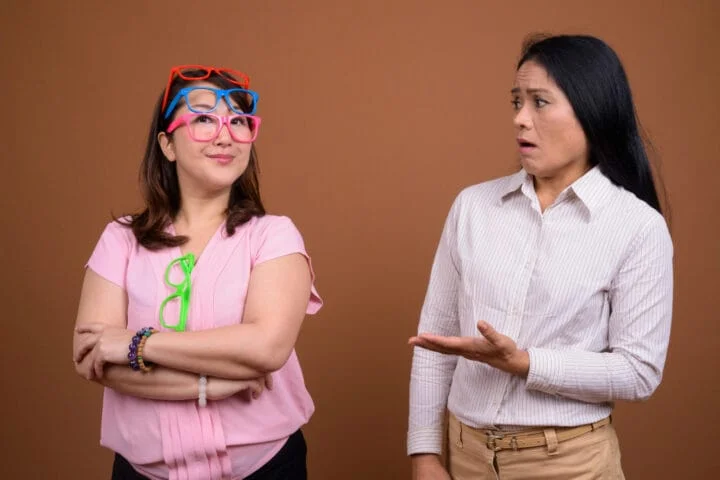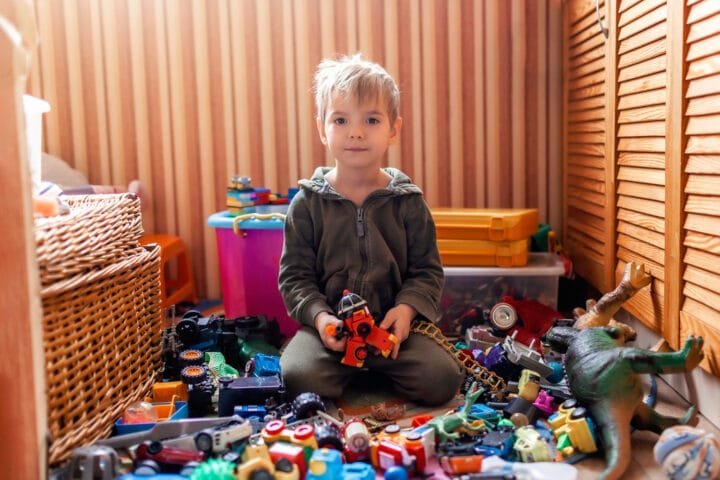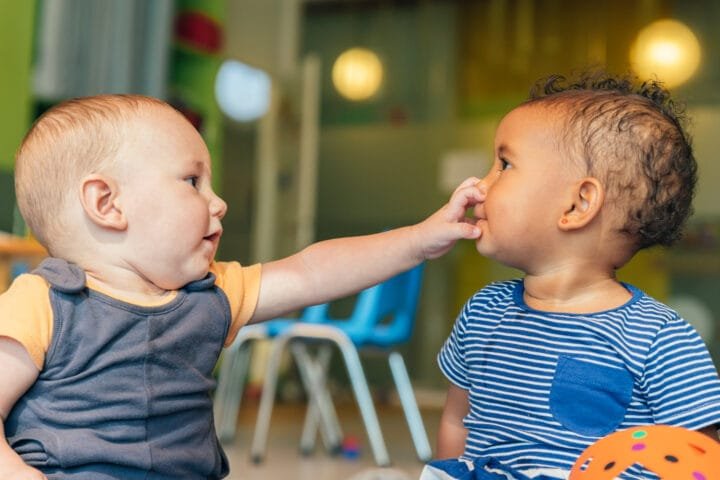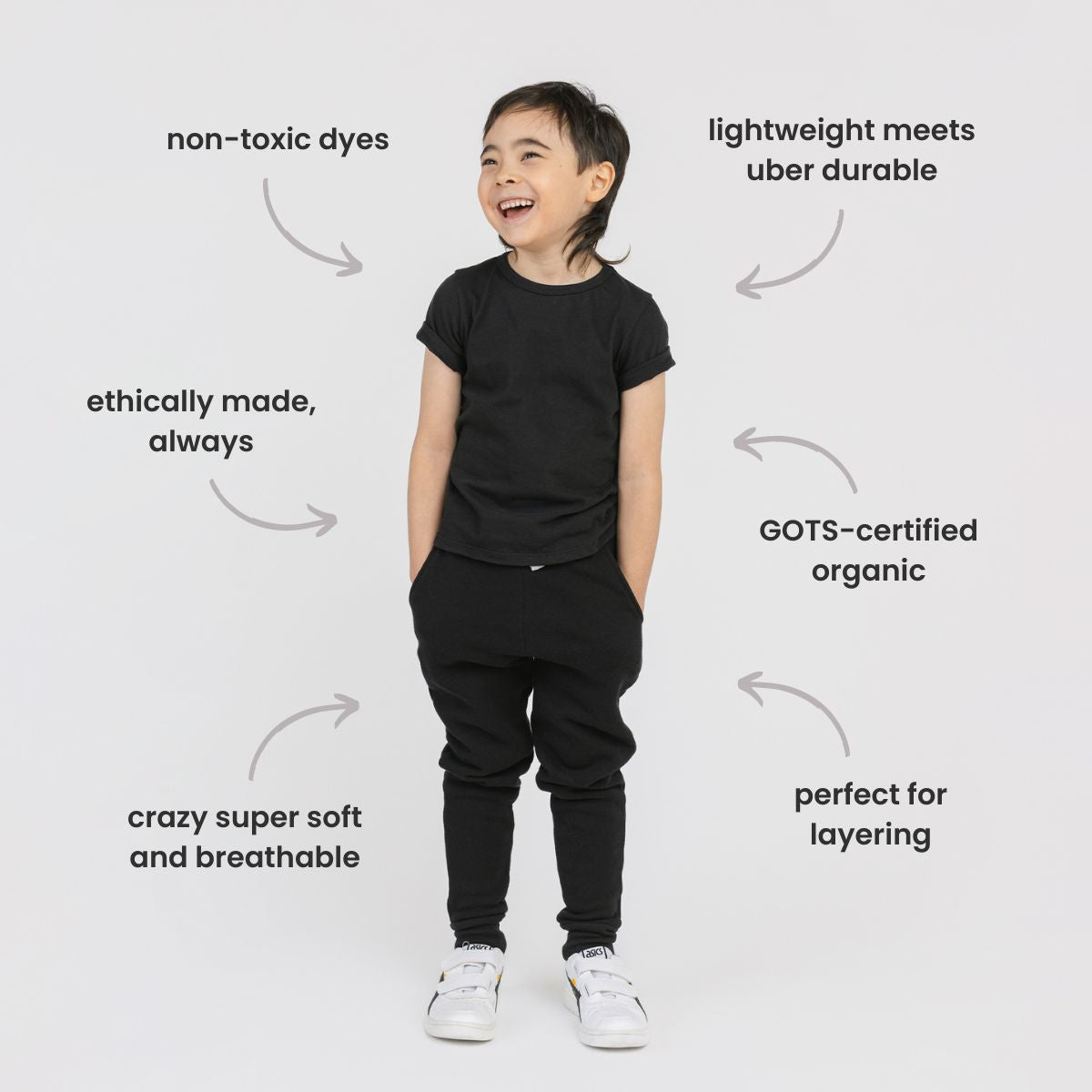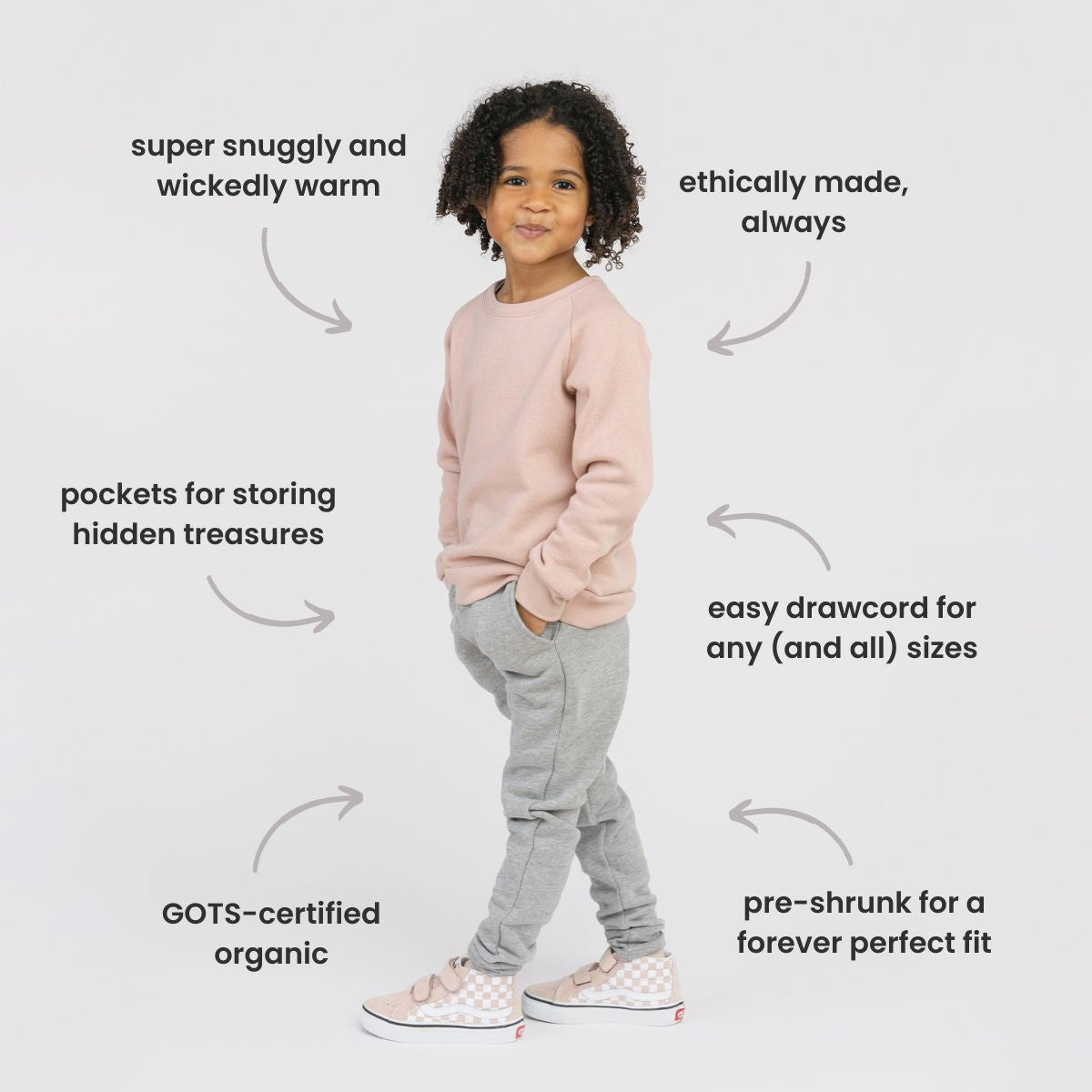Sowing Seeds of Change: Why Sustainable Fashion Matters for the Next Generation
Just picture yourself on a laundry day, and you have a whole pile of worn-out garments with many stains. Strait-leg jeans with racecar knees, dresses which are used only once, t-shirts with cartoon characters with colors that are hardly left – a sad testimony that every childhood has its fashion fads. But here’s a sobering thought: the average American throws away 81 pounds of textiles yearly. That’s roughly the weight of a golden retriever! Multiply that by millions of people, and you have a colossal amount of waste that’s choking our planet. The EPA estimates that textile waste has increased by 811% since 1960!
The villain? Fast fashion. Easily the most alluring siren within the retail sector, one cannot resist its trendy offerings at such low prices. But behind this glamorous figure is an ugly side—an ugly side of an industry where people and the planet come second to profit. But do not despair! This is just one of the many battles that can be won against fast fashion, and our children can be the courageous defenders on the front end for a very long-term case for a sustainable future.
Consider this: Our children are still at an age where their sponge-like brains can soak up all the information, which, in turn, will allow them to develop certain habits. This is why we are raising future socially conscious individuals who can influence others by communicating with them about sustainable and ethical approaches to clothing from today on. They will be the ones who alter the paradigm and reshape societies for a more sustainable mode of clothing rather than fast fashion.
What is sustainable fashion? It’s more than a phrase. It’s a comprehensive approach to garments that considers the entire cycle of cloth, from the fibers used to the end of its life. It’s about minimizing the environmental impact, respecting workers’ rights, and promoting fair labor practices. It’s about choosing quality over quantity and valuing clothes made to last. According to a study by the Ellen MacArthur Foundation, the fashion industry is responsible for 20% of global clean water pollution from dyeing and finishing products. That’s a significant impact, and it’s one that we can help reduce by making conscious choices.
Fun and Engaging Ways to Teach Kids About Sustainable Fashion
Clothing Closets as Classrooms
Remember when your son insisted on wearing his superhero cape to the dentist? Kids have a unique way of seeing the world, and their closets are no exception. Instead of battling over mountains of clothes, transform those overflowing drawers into a learning opportunity!
Start by decluttering. Make it a game! Ask your child, “Have you worn this in the last year?” If the answer is no, it’s time to say goodbye. Donate, repurpose, or give it a new life through a clothing swap. Speaking of which…
Swap ‘til You Drop!
Miss those wholesome childhood days when you spent time with your close friends at their houses, swapping stories and cracking jokes? Swapping clothes is similar to those fun moments, but now it is environmentally friendly! Invite friends, neighbors or classmates together, and let the swapping commence! Children get to exchange clothes and get styling tips while learning the importance of reusing and reducing waste. Moreover, it’s a great way to update their wardrobe without spending a penny. Your daughter might as well willingly give away the glittery tutu she’s been keeping since she was in the nursery!
To make your swap party even more educational, consider adding some fun activities:
- Fashion Show: Let the kids strut their stuff in their newly acquired outfits!
- Upcycling Station: Set up a table with fabric scraps, buttons, and other embellishments and let the kids personalize their clothes.
- Label Detective Game: Print out some clothing labels and have the kids try to decipher the different symbols and materials.
DIY Fashion Fun
Remember those tie-dye kits from our childhood? Time to dust them off! Upcycling and repurposing old clothes is fun and teaches valuable lessons about creativity and resourcefulness. A study by WRAP (Waste & Resources Action Program) found that extending the life of clothes by just nine months can reduce carbon, water, and waste footprints by around 20-30% each. Encourage your children to repurpose old t-shirts into fashionable tote bags or cut jeans into shorts. Pinterest has plenty of DIY ideas! Unleash the creativity! Who knows… even a career as a designer might arise.
Here are some more DIY fashion project ideas:
- Fabric Painting: Let your kids express their artistic talents by painting designs on old clothes.
- Embroidery: Teach them basic embroidery stitches to add a personal touch to their garments.
- Patchwork: Use fabric scraps to create unique patchwork designs on clothes or accessories.
- Jewelry Making: Turn old buttons, beads, and fabric scraps into one-of-a-kind jewelry.
Experiences That Stick
What’s in the package is history, but what matters most is the moment. In contemporary society, history is best appreciated through practical experience; therefore, travelling out of class could best be understood as a history learning experience, such as taking students to a local cotton farm, how cotton and other fibers are produced and used for farming, or perhaps the inner workings of silkworms can be appreciated by visiting that place. Kids want to witness the processes involved, such as shearing sheep. How about visiting a textile recycling facility? It is quite a shocking experience to encounter mountains of used clothes. Touring around the facilities of some ethical clothing brands assists in better understanding responsible production. These experiences have a long-term effect on an individual’s fashion business knowledge.
To enhance the learning experience, consider these additional activities:
- Grow your cotton: Plant some cotton seeds in a pot and let your kids observe the plant’s growth cycle.
- Visit a museum: Many museums have exhibits on textiles and fashion history, offering a glimpse into the evolution of clothing.
- Watch documentaries: Many documentaries, such as “The True Cost” and “River Blue,” explore the fashion industry’s environmental and social impact.
Shopping Smart: Guiding Kids to Make Sustainable Choices
Decoding Labels: A Secret Agent Mission!
What about the small tags sewn inside the clothes? Those are almost like secret messages! Kids should be encouraged to become little fashion detectives! Let them know there’s more to the labels than they see and help them distinguish between organic and conventionally grown cotton. Teach them about the environmental advantages of using recycled resources and why they are the true warriors. Education is everything! With this knowledge, they will be able to decide what clothes they are purchasing responsibly.
For example, did you know that conventional cotton farming uses approximately 22.5% of the world’s insecticides and 10% of the world’s pesticides? That’s a lot of chemicals!
Here’s a quick guide to standard clothing labels:
- Organic Cotton: Look for labels that certify the cotton as organic, such as GOTS (Global Organic Textile Standard) or OEKO-TEX.
- Recycled Materials: Look for labels that indicate the percentage of recycled content, such as “50% recycled polyester.”
- Fair Trade: Look for labels that certify the garment as fair trade, such as Fairtrade International or World Fair Trade Organization.
The Power of “Pre-Loved”
Thrift stores are like treasure hunts! Help your children experience the fun of scavenging for distinctive secondhand pieces through thrifting. This is a great way to instill in them the importance of thrift and cutting emissions. There are, moreover, additional options due to online platforms for secondhand shopping. They may have encountered such an old piece that it has become their favorite.
And let’s face it, if there is anything fun at any age, it is getting a good deal! According to a report by thredUP, the secondhand apparel market is expected to reach $77 billion by 2025.
Here are some tips for successful thrifting:
- Go with a plan: Have a general idea of what you’re looking for to avoid getting overwhelmed.
- Check the quality: Scrutinize the garment for any signs of wear and tear.
- Try it on: Make sure the garment fits properly before you buy it.
- Be patient: Finding good-quality items at thrift stores takes time, so keep going if you find something right away.
Supporting Ethical Brands
Let’s be honest: kids love brand names. But which ones are doing good for the planet? Introduce them to companies with sustainable practices. Explain fair trade clothing in age-appropriate terms. Resources like Good On You and Ethical Consumer can help you research brands together. In supporting more ethical brands, we let everyone in the fashion sphere understand that we value individuals and the environment. A Nielsen report published in the year 2021 claims that over, or rather, 73% of consumers across the globe would be willing to alter their purchasing behaviors to reduce their footprint.
Here are some questions to ask when researching brands:
- Where are the clothes made? Look for brands that manufacture their clothes in countries with strong labor laws.
- What materials are used? Look for brands that use sustainable materials like organic cotton, recycled fibers, or innovative fabrics made from plant-based materials.
- What are the company’s environmental policies? Look for brands committed to reducing their environmental impact, such as using renewable energy or minimizing waste.
- What are the company’s labor practices? Look for brands that pay workers a living wage and provide safe working conditions.
Nurturing a Sustainable Fashion Mindset
Cultivating Gratitude for Clothing
Do your kids know how much effort goes into making their clothes? It’s a long journey from the farmers who grow the cotton to the factory workers who sew the seams! Please encourage them to appreciate the resources and labor behind each garment. A simple “thank you” to the people who made their clothes can go a long way in fostering gratitude. And when we’re grateful for what we have, we’re less likely to take it for granted. A study by the University of California, Davis, found that grateful children tend to be happier, more optimistic, and have better social skills.
Here are some ways to cultivate gratitude for clothing:
- Talk about the journey of a garment: Explain the different steps involved in making clothes, from growing raw materials to manufacturing and transportation.
- Visit a factory or farm: Take your kids to see how clothes are made.
- Watch videos or read books about the fashion industry: Many resources can help kids learn about the people and processes of making clothes.
- Please encourage them to repair their clothes: Sewing on a button or patching a hole can give a garment a new lease on life.
Beyond Trends: Finding Their Style
Remember those neon leg warmers we wore in the 80s? Trends come and go! Encourage your kids to develop their style beyond fleeting fads. This helps them make conscious choices and avoid impulse buys. Help them discover what makes them feel confident and comfortable, regardless of what’s “in.” After all, true style is about expressing your individuality, not conforming to the latest trends. A Journal of Consumer Research study found that people who express their individuality through clothing choices tend to have higher self-esteem and are more likely to be seen as leaders.
Here are some tips for helping kids develop their style:
- Encourage self-expression: Let them choose clothes that reflect their personality and interests.
- Please don’t force them to wear things they don’t like. Respect their choices and avoid making them feel self-conscious about their clothing.
- Talk about different styles: Explore different fashion eras, cultures, and subcultures to broaden their horizons.
- Help them find role models: Look for people who express their individuality through clothing choices.
- Focus on quality over quantity: Encourage them to invest in a few well-made pieces they love rather than buying many cheap, trendy clothes.
The Ripple Effect: Small Choices, Big Impact
Help your kids understand that their choices have a ripple effect. Explain how buying eco-friendly fashion can protect our planet and improve the lives of people who make our clothes. Great! They can be part of the solution! These tiny things, such as using organic cotton or even secondhand clothes, can help. What if every child actively chose to wear only sustainable fashion – how big of a difference would that make? A study by the World Resources Institute found that if everyone in the world reduced their clothing consumption by just 10%, we could save 3.6 million tons of textile waste each year.
To illustrate the ripple effect, consider these examples:
- Water conservation: Choosing organic cotton over conventional cotton can save thousands of liters of water.
- Reduced pollution: Buying clothes made from recycled materials helps reduce pollution and conserve resources.
- Fair labor practices: Supporting ethical brands ensures that garment workers are paid a fair wage and work in safe conditions.
Inspiring a Generation of Conscious Consumers
We’ve tackled quite a lot! From squeezing items out of closets to interpreting tags, we’ve looked at practical means of introducing children to eco-fashion. Let’s remember that every little step counts. When we allow our children to make informed decisions, we are already changing the world and its descendants for the better. Let’s bring up a generation of green fighters who will revolutionize the world, one fashionable and eco-friendly outfit at a time!
FAQs
Sustainable fashion is an approach to clothing that aims to achieve the lowest possible environmental impact while being socially responsible. It includes, for example, the use of sustainable fabrics, waste minimization practices, and fair working conditions and employment throughout the supply chain.
The fashion industry has a significant environmental footprint that contributes to pollution, waste, and resource depletion. By choosing sustainable fashion, you can help reduce your environmental impact and support ethical practices.
There are many fun and engaging ways to teach kids about sustainable fashion! You can start by decluttering their closets and organizing a clothing swap, upcycling old clothes into new creations, and exploring thrift stores together. You can also teach them to read clothing labels and identify sustainable materials.
You can find sustainable clothing options for kids by looking for retailers that prioritize ethical and sustainable practices. Look for labels like “organic cotton,” “recycled materials,” or “fair trade.” Many online retailers specialize in sustainability; some conventional stores have dedicated sections for eco-friendly clothing. Remember to explore local thrift stores and consignment shops for pre-loved treasures!
Start by buying less and choosing quality over quantity. Encourage your kids to wear their clothes for longer and repair them when needed. Organize clothing swaps with friends and neighbors. Choose clothes made from sustainable materials like organic cotton or recycled fibers. Finally, support businesses that prioritize people and the planet over profits.
Related Posts
























